The code below uses a thread to mimic a long time running block in its Execute method and the OnProgress "callback" to notify the form the percent done has changed.
It's a very minimal example but it can show you one of the right directions in my opinion.
Notice that no error checking nor exception handling are currently performed.
Unit1.pas the main form and the thread class
unit Unit1;
interface
uses
Winapi.Windows, Winapi.Messages, System.SysUtils, System.Variants, System.Classes,
Vcl.Graphics, Vcl.Controls, Vcl.Forms, Vcl.StdCtrls, Unit2;
type
TMyRun = class(TThread)
protected
procedure Execute; override;
public
OnProgress: TProgressEvent;
end;
TForm1 = class(TForm)
Button1: TButton;
procedure Button1Click(Sender: TObject);
procedure FormCreate(Sender: TObject);
procedure FormDestroy(Sender: TObject);
private
{ Private declarations }
FProgressForm: TfrmProgress;
procedure myRunProgress(Sender: TObject; Stage: TProgressStage;
PercentDone: Byte; RedrawNow: Boolean; const R: TRect; const Msg: string);
procedure myRunTerminate(Sender: TObject);
public
{ Public declarations }
end;
var
Form1: TForm1;
implementation
{$R *.dfm}
procedure TMyRun.Execute;
var
i: Integer;
r: TRect;
begin
for i := 1 to 100 do begin
if Terminated then
Break;
Sleep(50);//simulates some kind of operation
if Assigned(OnProgress) then
Synchronize(procedure
begin
OnProgress(Self, psRunning, i, False, r, '');
end);
end;
end;
procedure TForm1.FormCreate(Sender: TObject);
begin
FProgressForm := TfrmProgress.Create(nil);
end;
procedure TForm1.FormDestroy(Sender: TObject);
begin
FProgressForm.Free;
end;
procedure TForm1.Button1Click(Sender: TObject);
begin
with TMyRun.Create do begin
FreeOnTerminate := True;
OnProgress := myRunProgress;
OnTerminate := myRunTerminate;
end;
FProgressForm.ShowModal;
end;
procedure TForm1.myRunProgress(Sender: TObject; Stage: TProgressStage;
PercentDone: Byte; RedrawNow: Boolean; const R: TRect; const Msg: string);
begin
FProgressForm.ProgressBar1.Position := PercentDone;
end;
procedure TForm1.myRunTerminate(Sender: TObject);
begin
FProgressForm.Close;
end;
end.
Unit1.dfm
object Form1: TForm1
Left = 0
Top = 0
Caption = 'Form1'
ClientHeight = 81
ClientWidth = 181
Color = clBtnFace
Font.Charset = DEFAULT_CHARSET
Font.Color = clWindowText
Font.Height = -11
Font.Name = 'Tahoma'
Font.Style = []
OldCreateOrder = False
Position = poDesktopCenter
OnCreate = FormCreate
OnDestroy = FormDestroy
PixelsPerInch = 96
TextHeight = 13
object Button1: TButton
Left = 48
Top = 24
Width = 91
Height = 25
Caption = 'Run the thread'
TabOrder = 0
OnClick = Button1Click
end
end
Unit2.pas the progress dialog
unit Unit2;
interface
uses
Winapi.Windows, Winapi.Messages, System.SysUtils, System.Variants, System.Classes,
Vcl.Graphics, Vcl.Controls, Vcl.Forms, Vcl.Dialogs, Vcl.ComCtrls;
type
TfrmProgress = class(TForm)
ProgressBar1: TProgressBar;
private
{ Private declarations }
public
{ Public declarations }
end;
var
frmProgress: TfrmProgress;
implementation
{$R *.dfm}
end.
Unit2.dfm
object frmProgress: TfrmProgress
Left = 0
Top = 0
BorderStyle = bsSizeToolWin
Caption = 'frmProgress'
ClientHeight = 51
ClientWidth = 294
Color = clBtnFace
Font.Charset = DEFAULT_CHARSET
Font.Color = clWindowText
Font.Height = -11
Font.Name = 'Tahoma'
Font.Style = []
OldCreateOrder = False
PixelsPerInch = 96
TextHeight = 13
object ProgressBar1: TProgressBar
Left = 16
Top = 16
Width = 265
Height = 17
TabOrder = 0
end
end
Referring to the comment which states that the long time running operations need to access a grid in the main form, in order to avoid to block the VCL thread on that object:
- To avoid the access to the VCL data from the thread - it's the preferred way if the already modified data have to be reused in the routine:
- pass a copy of the grid's data to the thread - say in the constructor
- update the copy
- update the grid with the edited copy of the data after the thread has finished - i.e. after the
ShowModal returns.
- To access the form's object from the thread - this can be done if the form's objects are accessed for very short time intervals:
- use a synchronized block to get the data from the grid
- update the grid in a thread's syncronized callback - i.e. in the
myRunProgress or in the myRunTerminate method
For different use cases a mixed approach could also make sense (pass the copy in the constructor/update the grid in a thread's syncronized block) if your routine doesn't take in account the already changed data: choose the method which best suits your needs.
If another external thread updates the grid, a thread1 could read the data then fill a form's private queue - say a TThreadList or another collection in a TCriticalSection block - and notify a thread2 to perform a job on the queue but I hope this is probably not needed to have your job done.
